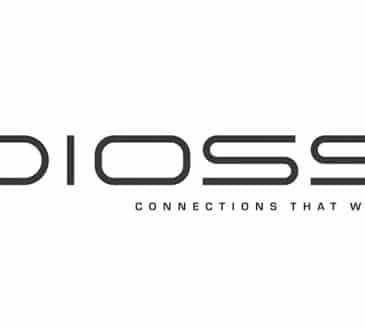4 Considerations When Measuring Your Company’s DEI Efforts

Striving to be more effective at DEI is a terrific goal for any organization. There’s a lot of room for improvement, but you’re destined for success when you make sure that you’re measuring your DEI efforts by more than just the numbers. Here are four great places to focus your efforts.
By and large, most companies support diversity, equity and inclusion (DEI) initiatives and their employees do, too. According to a 2022 GoodHire survey, three-quarters of participants said their companies were on board with DEI. That’s a good thing since 81% of employees said they’d go elsewhere if that weren’t the case.
What these figures don’t show is how hard it can be for organizations to actually measure diversity and inclusion in the workplace. DEI is a bit like art to most people — they assume they’ll know it when they see it. But do they? In the past, companies have resorted to using ratios and percentages to “prove” their commitment to DEI. Certainly, numbers are reasonable ways to indicate inclusive hiring strategies. However, a statistic on the number of workers from underrepresented or minority groups tells only part of the story.
For instance, what if professionals brought in to boost diversity numbers are marginalized culturally or repeatedly looked over for promotions? If their needs aren’t being met, they’re likely to leave. Even if they’re replaced by other diverse candidates, the company’s turnover churn — and corresponding real and collateral costs — will end up ridiculously high, and the DEI efforts for the company will fall flat.
Don’t worry if you’re seeing too much of your own institution in this description. Like most things in business, measuring DEI is hard but not impossible. Keeping tabs on the following four key metrics will help you get a better handle on whether your DEI is moving in a positive direction.
- Check your employees’ productivity levels.
DEI and increased employee performance have been linked regularly in many studies. As pointed out by the Network for Business Sustainability, a mere 1% bump in diversity in upper management levels can result in up to nearly $1,600 of added annual profits per employee. So if you want to know if your DEI is having the effect you want, monitoring your overall productivity is essential. Daniel Williams, principal at consulting company Pariveda, explains the connection between genuine DEI and productivity. “When employees face bigotry or discrimination in the workplace, it understandably takes an emotional toll and translates into behavior changes,” he says. He cites a SHRM report showing that employees who feel targeted have less mental and physical energy to put toward their jobs. “Even employees who aren’t the direct targets of racist behavior feel the effects. One in 10 Americans said they’ve taken time off after witnessing prejudice in the workplace. “The cost of not addressing this issue is both measurable and staggering.”Begin looking closely at your productivity. Is it falling despite more DEI-focused onboarding? You may have gaps in the way some colleagues are being treated. This should be identified and resolved through consistent training and managing.
- Review the demographics of executives in your organization.
It’s one thing to have a diverse entry-level workforce; it’s another to have widespread representation at the top of your company. Booz Allen Hamilton, a global technology company, regularly lands on lists of corporations embracing diversity. The reason is clear: Booz Allen doesn’t just talk the talk. Eight out of nine of its top leaders fall into DEI representation categories. The same can be said for nearly three-quarters of its Board of Directors. One method of improving the number of diverse leaders is to seek job candidates from more diverse pools. Another is with succession planning and career mapping. For example, you may want to chart ways for employees to progress upward within your company. These paths can be used as guides for upskilling workers so they’re ready to compete for management and, eventually, C-suite roles.You can’t change the DEI makeup at all levels of your company at once. That’s why getting started sooner makes sense. In time, you’ll have more equitable representation on the top rungs, which will make your organization more appealing to eager performers seeking diverse employers.
- Take a look at your corporate ecosystem.
Nothing thwarts an otherwise airtight DEI program faster than employee disengagement. A Gallup study update from early 2022 found that only 32% of employees are actively engaged in the workplace, having dropped from 36% in 2020. You can combat this challenge by ensuring that everyone on your team feels like they belong. Brian Reaves, chief belonging, diversity, and equity officer at HR-based tech provider UKG, says that while a lot of companies push out impressive DEI reports, they tell only half the story. “In my experience, only using demographic data for measuring the success of belonging, diversity, and equity programs limits the potential for impact,” explains Reaves. “Such data often fails to capture the intersectional experience of most employees and its impact on belonging.”He recommends trying to quantify more subjective benchmarks to get a broader understanding of DEI’s success. There are many ways to measure qualitative factors, like worker engagement. A good place to start is with employee satisfaction surveys. Routinely sending out surveys gives you a sense of the “people pulse” of your company.
- Evaluate your employee resource groups’ impacts.
Many companies have created employee resource groups (ERGs). These cohorts are made up of workers driven to foster more inclusive workspaces. ERGs have been around for many decades and are proving increasingly relevant in the desire to promote DEI.AT&T is one of the leaders in the ERG movement, offering 26 of them across the corporation. Some of the ERGs go back more than half a century. As noted on its website, AT&T provides its ERGs with money for scholarships and also backs employees who want to volunteer time to buoy nonprofits.
It’s not enough to simply provide funds and support for ERGs, though. Be sure you’re tracking and celebrating outcomes as well.
Striving to be more effective at DEI is a terrific goal for any organization. There’s a lot of room for improvement, but you’re destined for success when you make sure that you’re measuring your DEI efforts by more than just the numbers.
Written by Rhett Power.
Have you read?
Best CEOs In The World, 2022.
Global Passport Ranking, 2022.
World’s Richest People (Top Billionaires, 2022).
Economy Rankings: Largest countries by GDP, 2022.
Top Citizenship and Residency by Investment Programs, 2022.
Add CEOWORLD magazine to your Google News feed.
Follow CEOWORLD magazine headlines on: Google News, LinkedIn, Twitter, and Facebook.
Copyright 2024 The CEOWORLD magazine. All rights reserved. This material (and any extract from it) must not be copied, redistributed or placed on any website, without CEOWORLD magazine' prior written consent. For media queries, please contact: info@ceoworld.biz








